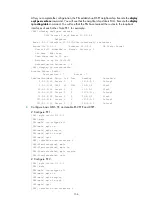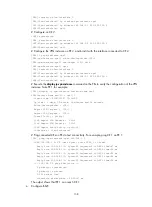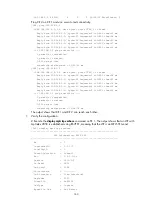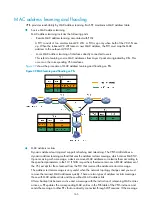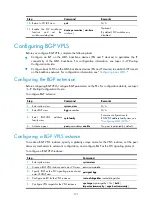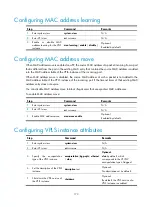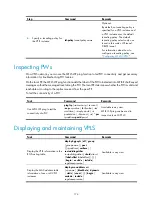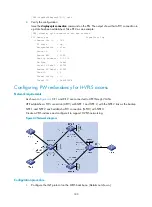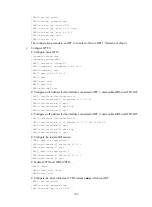
168
H-VPLS with QinQ access
Figure 41
H-VPLS with QinQ access
As shown in
, MTU is a standard bridging device and QinQ is enabled on its interfaces
connected to CEs.
Data forwarding in H-VPLS with QinQ access is as follows:
1.
Upon receiving a packet from a CE, MTU labels the packet with a VLAN tag as the multiplex
distinguishing flag, and transparently sends the packet to PE 1 through the QinQ tunnel.
2.
When receiving the packet, PE 1 determines which VSI the packet belongs to by the VLAN tag and,
based on the destination MAC address of the packet, tags the packet with the multiplex
distinguishing flag (MPLS label) for the PW. Then, it forwards the packet.
3.
Upon receiving the packet from the PW, PE 1 determines to which VSI the packet belongs by the
multiplex distinguishing flag (MPLS label) and, based on the destination MAC address of the
packet, labels the packet with the VLAN tag. Then, it forwards the packet through the QinQ tunnel
to MTU, which in turn forwards the packet to the CE.
For packets to be exchanged between CE 1 and CE 2, MTU can forward them directly without PE 1
because it holds the bridging function by itself. For the first data packet with an unknown destination
MAC address or a broadcast packet, MTU broadcasts the packet to CE 2 through the bridging function
and, at the same time, forwards it through the QinQ tunnel to PE 1, which replicates the packet and sends
a copy to each peer CE.
PW redundancy
The network design with a single PW between a UPE and an NPE has a distinct drawback: once the PW
experiences a failure, all VPNs connected to the aggregate device lose connectivity. The H-VPLS with LSP
access provides redundant links for PW backup. Normally, the primary PW link is used. When the
primary link fails, the backup link takes over the VPN services.
Figure 42
PW redundancy for H-VPLS with LSP access
CE 3
NPE 3
N-PW
NPE 1
N-PW
N-PW
CE 1
CE 2
NPE 2
UPE
U-PW
(Backup link)
U-PW



